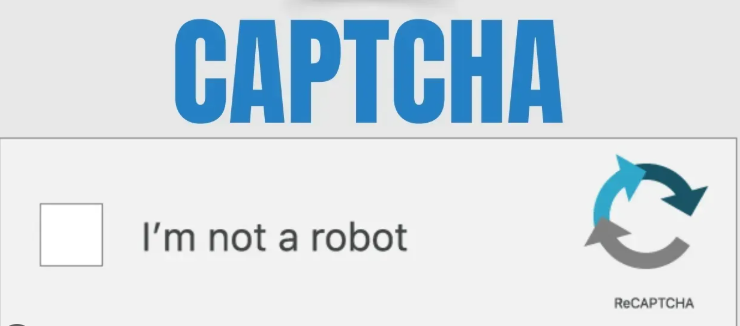Captcha (CAPTCHA)Since its inception in 1997, CAPTCHA has evolved in a "human vs. machine" game. As automated tools, OCR and machine learning capabilities have improved, and "human problem solving services" have emerged, so have attackers' methods of targeting CAPTCHAs. Understanding these evolutions can help you choose a more robust protection strategy for your WordPress site.
![Image [1] - Captcha has been breached? The latest truth about WordPress security!](http://gqxi.cn/wp-content/uploads/2025/10/20251024103153649-image.png)
I. Evolutionary overview
- Early static image CAPTCHA: distorted character images that resisted simple OCR. then more complex deformations, noise and interference were added.
- Interactive/behavioral CAPTCHAs: sliders, point-and-click images, drag-and-drops, etc., are starting to incorporate user behavioral signals to determine the human machine.
- Risk scoring and senseless CAPTCHA: with reCAPTCHA v3 As a proxy, a risk score is returned and combined with behavioral analysis to decide whether to challenge the user.
![Image [2] - Captcha has been breached? The latest truth about WordPress security!](http://gqxi.cn/wp-content/uploads/2025/10/20251024104117651-image.png)
- The resulting confrontation: attackers evolve simultaneously, using stronger image recognition algorithms, browser automation, and proxy networks with paid/crowdsourced manual solving services to get around it.
II. Common attack categories
- Machine Recognition (OCR / ML) - using image recognition models to try to recognize characters or target objects; recognition rates increase as ML advances.
- Browser Automation and Scripting - Simulates full browser behavior to trigger or handle challenges, but modern solutions detect browser fingerprints and behavioral differences.
- Human solving services (CAPTCHA-solving farms) - challenges are forwarded to human solvers in real time and are extremely difficult to defend against with a single CAPTCHA.
- Network Layer and Proxy Abuse - Use of residential proxies or large-scale IP pools to hide the source of traffic and bypass IP-based speed limits or blocking.
![Image [3] - Captcha has been breached? The latest truth about WordPress security!](http://gqxi.cn/wp-content/uploads/2025/10/20251024104955988-image.png)
- Combination and Chain Attacks - Combine the above tactics to test for weaknesses against multiple layers of protection in parallel.
III. Defensive recommendations
- Layered protection: don't rely on a single CAPTCHA; combining CAPTCHA with rate limiting, WAF, and account behavior analysis.
- Risk scoring is prioritized: using CAPTCHAs with behavioral scoring (or third-party risk control) leaves visible challenges to high-risk sessions.
- Resistance to manual solving: increased automation/forwarding costs through delays, image watermarking, session binding and event association.
- IP and Proxy Detection: Combines reputation repository and anomaly traffic detection to identify and restrict suspicious proxy/cellular traffic.
- Device and browser fingerprinting: detect common features of crawlers/automation (no JS, no WebGL, fingerprinting anomalies) and weight them in the score.
![Image [4] - Captcha has been breached? The latest truth about WordPress security!](http://gqxi.cn/wp-content/uploads/2025/10/20251024105421467-image.png)
- Logs and Alerts: Record failure modes, challenge pass rates and unusual high-frequency requests to trigger timely investigations.
Fourth, WordPress practical advice
- Use proven CAPTCHA/Anti-Abuse Service (with Behavior Scoring and Bot Management) and keep plugins and keys up to date.
- Impose comprehensive speed limits on registration/login/comment interfaces (IP, account, IP+account linkage).
- Enable multi-factor authentication (MFA) on sensitive paths to separate account security from form protection.
![Image [5] - Captcha has been breached? The latest truth about WordPress security!](http://gqxi.cn/wp-content/uploads/2025/10/20251024105724812-image.png)
- Use specialized anti-spam/anti-abuse plugins for common abuse paths (comments, registrations, password resets) in conjunction with WAF rules.
- Regularly review logs, simulate attacks to detect blind spots, and adjust policies according to OWASP Automated Threat Guidelines.
V. UX and Compliance Considerations
intense CAPTCHA Can harm user experience and conversion rates; deploy on a "risk-rated + low-friction priority" basis, using senseless challenges where necessary and displaying interactive CAPTCHAs only for high-risk scenarios. Pay attention to privacy compliance (e.g., include tracking behaviors of third-party services in your assessment) and communicate this in your privacy policy.
Link to this article:http://gqxi.cn/en/79117The article is copyrighted and must be reproduced with attribution.





















![Emoji[chi]-Photonflux.com | Professional WordPress repair service, worldwide, rapid response](http://gqxi.cn/wp-content/themes/zibll/img/smilies/chi.gif)
![Emoji[xigua]-Photonflux.com | Professional WordPress Repair Service, Worldwide, Fast Response](http://gqxi.cn/wp-content/themes/zibll/img/smilies/xigua.gif) [Images]
[Images]





No comments